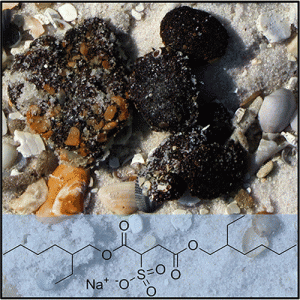Helen K. White *†, Shelby L. Lyons †, Sarah J. Harrison †, David M. Findley †, Yina Liu ‡, and Elizabeth B. Kujawinski ‡ † Department of Chemistry, Haverford College, 370 Lancaster Avenue, Haverford, Pennsylvania 19041, United States ‡ Department of Marine Chemistry and Geochemistry, Woods Hole Oceanographic Institution, Woods Hole, Massachusetts 02543, United States
Environ. Sci. Technol. Lett., Article ASAP DOI: 10.1021/ez500168r Publication Date (Web): June 23, 2014 Copyright © 2014 American Chemical Society *E-mail: hwhite@alum.mit.edu.
During the 2010 Deepwater Horizon (DWH) oil spill 1.84 M gallons of chemical dispersant were applied to oil released in the sub-surface and to oil slicks at the surface. We used liquid chromatography with tandem mass spectrometry (LC/MS/MS) to quantify the anionic surfactant DOSS (dioctyl sodium sulfosuccinate) in samples collected from environments known to contain oil persisting from the DWH oil spill. DOSS was found to persist in variable quantities in deep-sea coral communities (6-9000 ng/g) 6 months after the spill, and on Gulf of Mexico beaches (1-260 ng/g) 26-45 months after the spill.
These results indicate that the applied dispersant, which was thought to undergo rapid degradation in the water column, remains associated with oil in the environment and can persist for ~4 years.
